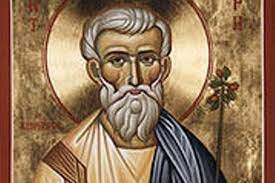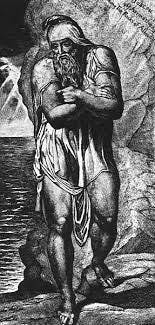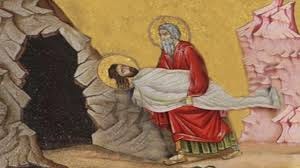Britain recovered, over time, after the burial of Brân’s head, and became a pleasant, prosperous land, renowned for its tin and precious metals, and also for its holy druids and great stone circles.
Joseph of Arimathea was a tin merchant from Judea, a respected member of the Jewish Council – the Sanhedrin – and uncle to Mary, the mother of Jesus. By his lifetime, the city of Rome, founded by Trojan refugees, had grown so mighty that its Empire included those Greek city-states that had once razed Troy to the ground. It ruled in regions as remote as Joseph’s homeland to the South East and Belgica to the North West.
Britain itself became a Roman province from 43 AD onwards. Joseph had been living in the country for ten years by that point. He had been visiting as a trader for three decades before that and was much-loved by the people of Cornwall. Britain’s South West had long enchanted him. Whenever business allowed, he would slip off alone to the high places, feeling the breeze on his face and laying his hands on the roughly shaped stones that sprang up everywhere out of the ground. Whether these were natural phenomena, moulded over millennia by the elements, or if they had been planted in the soil by men with some religious or astrological intent, Joseph could not tell. All he knew was that here, on these wild and blowy headlands, he felt closer to God and the deep-down truth of things than he ever did at home.
One afternoon in Nazareth, when Jesus was nine years old, his father, Joseph the Carpenter, asked Joseph if he would consider taking the boy with him on his next trip to Britain. The Carpenter’s view was that Jesus would benefit from seeing how the people of a different civilisation lived, worked, and prayed.
So Joseph brought Jesus to Cornwall. He took the child, after each day’s trading, to the sites that felt most sacred to him and where the veil between the worlds seemed especially thin. And Jesus laid his hands upon the rocks and sat inside the stone circles. He danced and played, and a light shone around him, and all living things – the high-born, the low-born, birds and beasts and the boughs of trees, even stones and soil – radiated and echoed that light whenever he was near.
Twenty quiet years followed. Joseph stored these memories in his heart. Then Jesus irrupted into the public eye. There were miracles and disciples and enemies and denunciations until he became too much for his countryfolk and they nailed him to a tree, and he died upon it and was buried by Joseph’s own hands in Joseph’s own tomb.
Rain lashed down and darkness blackened the streets and squares of Jerusalem. Joseph staggered around in a daze, stunned beyond measure. He wandered back to the upper room where Jesus had supped with his disciples on the night before his death. He saw the earthenware chalice – a ‘Grail’, Jesus had called it – that the Lord had blessed and shared around, and he picked it up and took it home with him as a token and remembrance.
Then, two nights later, Jesus himself came to Joseph, hands and feet red raw still from the wounds, but face and body radiant and resplendent. He took the Grail and said Mass with it and taught Joseph to do the same. Then he consecrated him as the first Grail Priest and King and gave him these instructions:
‘Take this Grail, gather your family and friends, and sail West and North to Britain. Disembark at the Cornish coast and walk East and North until you hear a bell sound three times. Stop there, plant your staff in the ground, and build me a church. You shall dedicate it to my mother and your niece, Mary most Holy. You will see me again at that time.’
So Joseph sailed West and North as the Lord had commanded. He landed at the Isle of Ictis and walked East and North for twenty-one days and nights. He held his staff in his left hand and the Grail in his right, and as he walked along with his followers, all living things – the high-born, the low-born, birds and beasts and the boughs of trees, even stones and soil – drew near. A light shone around the Grail and that light was reflected in the faces and forms of all who came close.
It was Mid-Summer Morn. A bell rang three times. Joseph planted his staff in the ground and immediately a white thorn tree blossomed into life. He saw that he was on a hilltop, looking down on a region where sea and land were curiously mingled. He built his church – Saint Mary’s Abbey – in a place called Glastonbury, between the hills and away from the water. It was a plain wattle building to start with, and the Lord appeared to Joseph and his friends as they laboured, and he blessed them and helped them in their task.
Throughout the four hundred years of Roman occupation, the Grail was left exposed on the High Altar for all to venerate. Saint Mary’s became a place of pilgrimage – a powerhouse of prayer – and the Faith in Britain grew from there like the mustard seed in Our Lord’s parable.
Joseph was succeeded as Grail Priest and King by his son, Josephus, and this royal and sacred line continues to our day – sometimes with separate Priests and Kings, sometimes with both roles combined in one man. But always the titles have been held, and always will be to the end of the age – a secret, contemplative counterpart to the outward, visible acts of the reigning monarch. The one cannot do without the other, like Martha and Mary, day and night, and sea and land. The God behind the gods, that same boy who lit up the Cornish cliffs, needs them both – the hidden and the revealed – to build, maintain, and make manifest his Kingdom.






